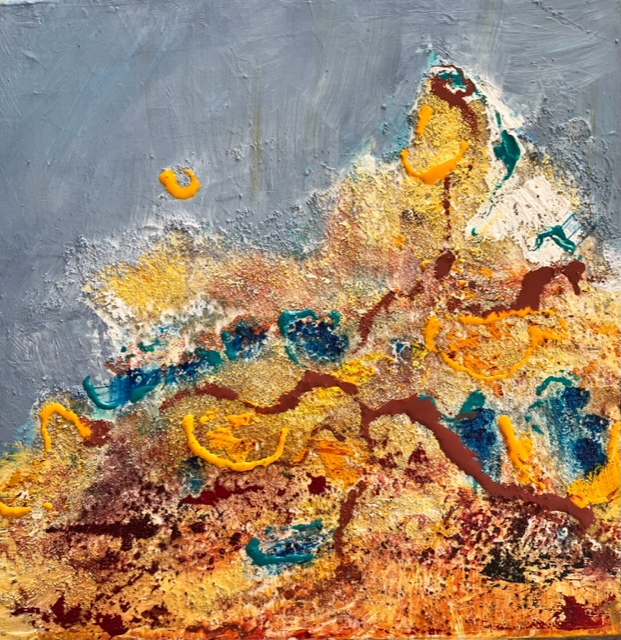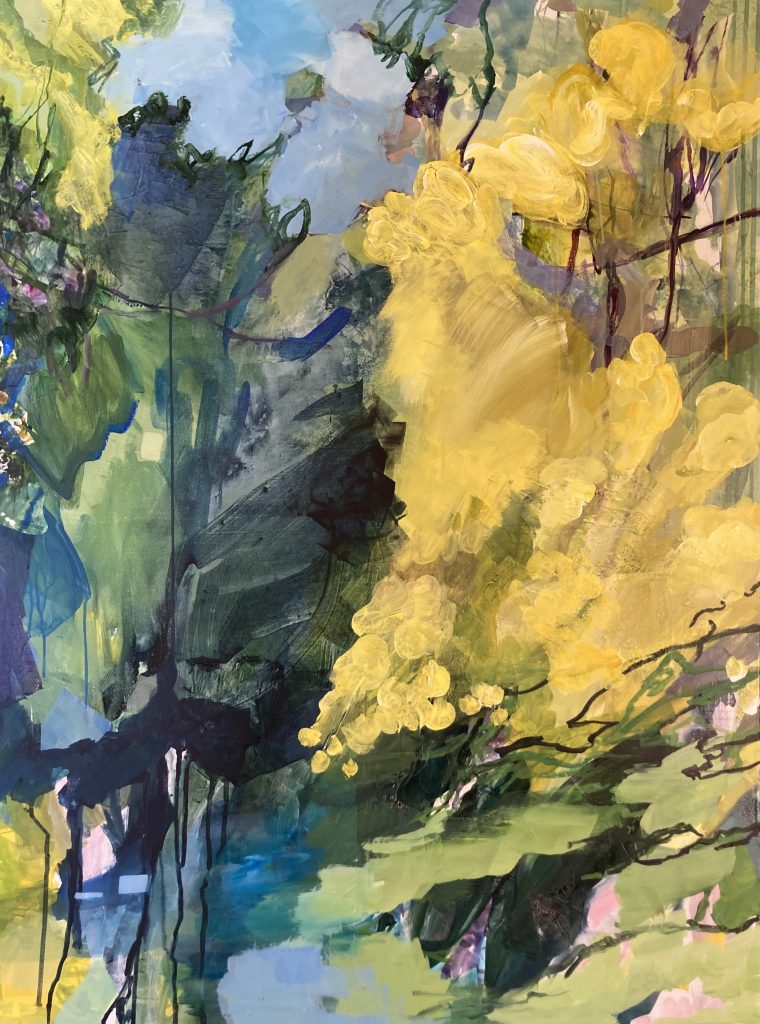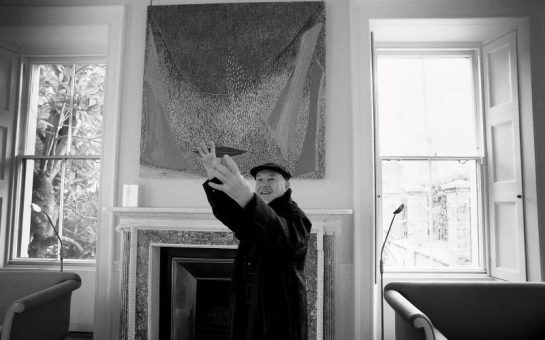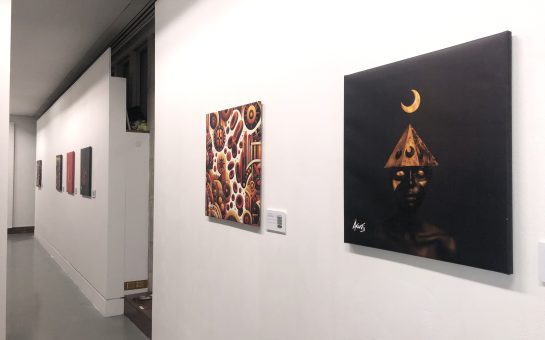Celebrating the shifting landscape, artist Dhama Thanigasapapathy has new artwork shown in an exhibition at Willesden Gallery.
Thanigasapapathy is a contemporary artist who specialises in nature and landscape using oil paints on canvas among other materials.
She previously worked in IT for nearly 30 years before transitioning to fine art, getting her BA (Hons) degree from the Open College of the Arts (OCA) last year where she joined the group ArtLab2023.
When asked about the theme of the upcoming exhibition ‘Curious Space: Transitions in landscapes’, Thanigasapapathy elaborated on her love for nature and how she reflects that in her artwork.
“We were looking specifically at human relationships with the environment and where there was something a bit peculiar about the space because of a transition from one type of space to another,” said Thanigasapapathy
“Every work in here has that human connection with the environment and that transition of different materials or different light or different types of environment in it.”
Thanigasapapathy spoke about her life journey going from an IT Cambridge graduate to an OCA BA (Hons) in fine art graduate, what inspires her art style, her approach to this exhibition theme, the future of her art and much more.
When asked about the motivation for her transition into art, Thanigasapapathy said: “I had always been interested in art.
“I loved making it.
“It was a passion I couldn’t hold back anymore.”

Taking inspiration from her background in IT, Thanigasapapathy uses the themes of futurism and technology alongside the natural world in her pieces.
Her work aims to make people rethink the familiar, and Thanigasapapathy said: “I wouldn’t say my outlook is cynical.”
She explained that her work instead comes from the question of ‘What happens if things don’t change’?
Thanigasapapathy also discussed the competitive nature of the art world, comparing it to the ‘chicken and egg’ philosophy.
She said: “If you’re not established, they’re not really interested in the gallery.
“You have to have made a name for yourself first, but you can’t make a name for yourself unless you’ve been in big galleries.”
A struggle for newly emerging artists like herself, and the collective of artists she is in.
Thanigasapapathy is part of a collaboration of artists called ArtLab2023. The creative minds all studied together and were a constant source of support throughout their time at the Open College of Arts.
Thanigasapapathy highlighted that being surrounded by other artists allows you to bounce off of each other’s ideas and receive constructive criticism.
Therefore, the group formed a collective in order to continue supporting each other after they graduated.
Thanigasapapathy said: “Everyone brings their own life experiences to their art.”
Recently, some members of ArtLab 2023 took a trip to Munich where the group learnt different techniques from each other.
The exhibition ‘Curious Space: Transitions in Landscape’ features works from the ArtLab 23 Artists Collective.

Focusing on colour, light and form, Thanigasapapathy believes that they are all ‘viewing the theme slightly differently’, and are therefore curating an exhibition which will portray a variety of artworks and styles in response to the idea of ‘Curious Spaces’.
Favouring oil paints, Thanigasapapathy said: “They take a life of their own and start behaving like water running down a hillside or mud sliding down a volcano.”
Meanwhile, her fellow artists prefer art mediums such as figurine work, or in the case of Sue Parr, stinging nettles.
The landscapes are depicted in dark and eerie ways through colour and texture which adds a sense of chaos to both the exhibition’s art and the viewer as they are forced to focus on the fate of the natural environment, something that is perhaps easily ignored in day-to-day life.
Thanigasapapathy spoke about the inspiration for the pieces within the exhibition which explore human connection with the landscape: “I do find myself attracted to things like the seas and the mountains and those kinds of quite dramatic edges.”
Artists within the collective have brought in their life experiences, enriching their art.
‘Curious Space: transitions in landscape’, will be an exciting and interesting exhibition, bringing something new to the table.
Thanigasapapathy mentions how landscapes have taken a backseat over the last 20 or 30 years, with trends such as figure paintings gaining attention, however she hopes that humans can continue to explore their relationship with the environment.
Thanigasapapathy ended: “Seeing a painting that shows how beautiful it [the environment] is a way of getting people to understand this is important for us as humans.”
Curious Space: Transitions in Landscape is being shown at Willesden Gallery from 9-20 July 2024.





Join the discussion